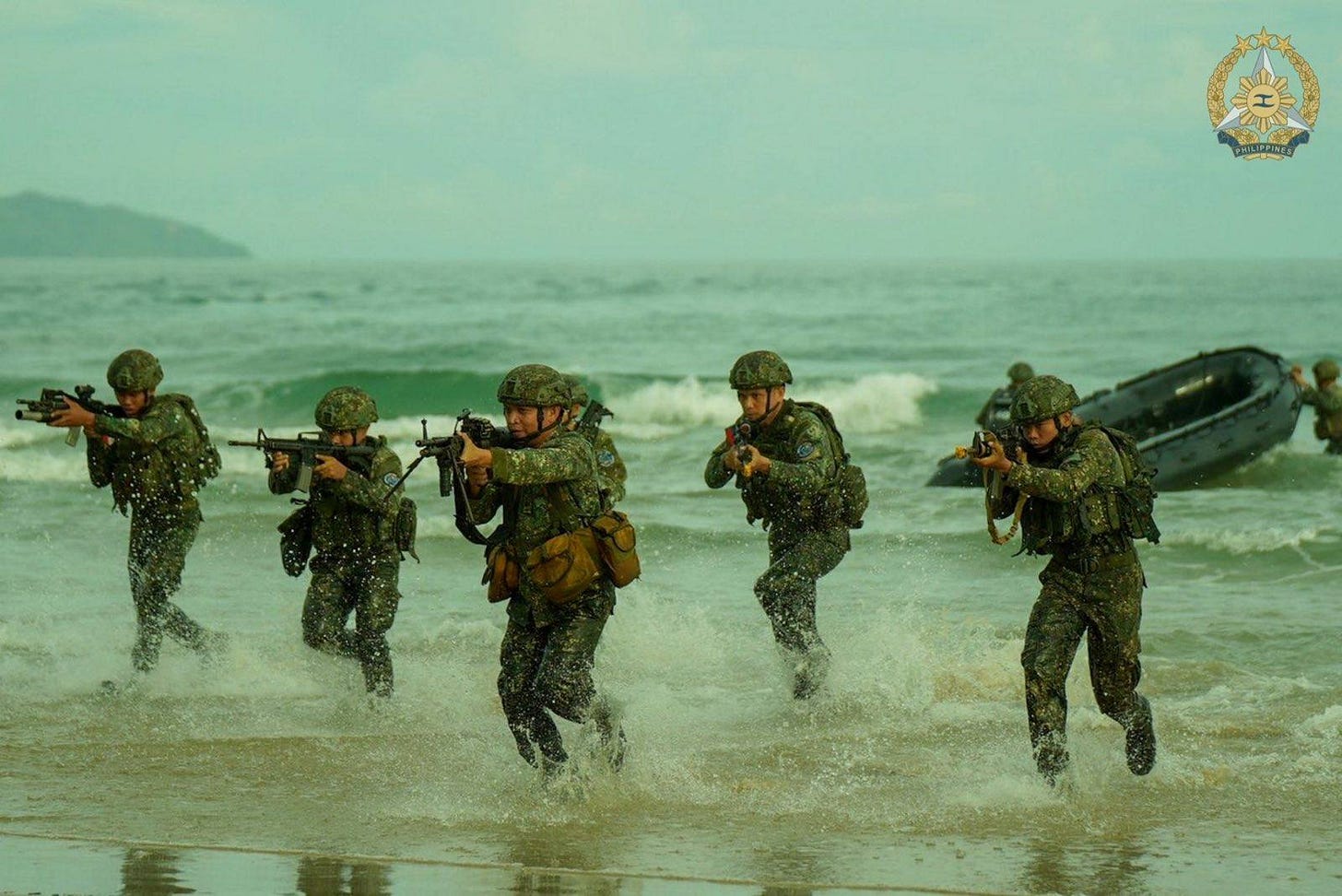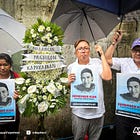Australia's Philippine Base Deal Signals New Regional Security Reality
Military infrastructure agreement represents strategic shift as allies prepare for China threat
Is Australia preparing to forward deploy troops and aircraft to the Philippines?
Australia’s Deputy Prime Minister and Defense Minister Richard Marles has signed a deal with his Filipino counterpart, Gilberto Teodoro Jr., with the intention of constructing eight military infrastructure projects in five undisclosed locations in the Philippines.
Of course, Canberra cannot start actual construction until a defense cooperation agreement (DCA) is finalized and signed by next year. There were scant details about the specific infrastructure to be put up by the Australians, possibly in the northern and western parts of the archipelago. These are the areas where Australian troops hold drills with Filipino troops under the 2012 Status of Visiting Forces Agreement.
On the surface, it appears the Australian DCA is similar to the Enhanced Defense Cooperation Agreement (EDCA) the Philippines has with the United States. But Teodoro was quick to point out it was not. He said the 2014 EDCA deal was anchored on the 1951 Mutual Defense Treaty (MDT) and not with the 1998 Visiting Forces Agreement.
Australia has no defense treaty. It only has a status of forces agreement, a framework allowing Australian troops to train and hold drills in the country. Under the 1987 Constitution, no foreign troops are allowed on Philippine soil unless allowed by a treaty.
Truth matters. Quality journalism costs.
Your subscription to Mencari (Australia) directly funds the investigative reporting our democracy needs. For less than a coffee per week, you enable our journalists to uncover stories that powerful interests would rather keep hidden. There is no corporate influence involved. No compromises. Just honest journalism when we need it most.
Marles and Teodoro said a new deal will be finalized and signed in 2026 to allow Australia to begin building military structures in Philippine bases. This is exactly what the US did under the 10-year EDCA deal which has expanded from five to nine locations.
However, the US has access to other non-EDCA sites, such as Subic, Clark, and Batanes. The question now is where would the Philippines-Australia DCA stand? If Australia would build EDCA-like structures, is Canberra entering into a formal alliance with Manila? Obviously, the existing SOVFA with Australia is not enough to justify the planned construction.
Australia needs to build military structures, like warehouses, fuel and munitions depot, hangars, and barracks for thousands of troops taking part in biennial exercises Alon that started in August 2023. Marles described the amphibious drills as Australia’s largest overseas exercises. For this year’s iteration, Australian sent a Hobart-class destroyer which sailed together with a Canadian and Philippine guided-missile frigates.
An anti-submarine P8 aircraft, an electronic warfare plane, an aerial refueling tanker and several F18F multi-role fighters were brought to the two-week exercises. Five armored vehicles and two 155mm artillery pieces were also deployed. If Australia’s intention is to expand the Alon drills in the coming years in the magnitude of Balikatan exercises between the US and the Philippines, then it would need the build structuresp to preposition logistics and equipment in the country.
These assets are not solely for drills but they will be valuable for humanitarian assistance and disaster response (HADR) operations. The US and Australia are not the only countries interested in holding drills with the Philippines. New Zealand has also concluded its VFA version. Japan has similar arrangements under the Reciprocal Access Agreement (RAA), another variant of a status of forces agreement. Canada and France are also negotiating similar VFA deals.
The Philippines has a template for status of forces agreements. What it needs now is another template for an EDCA deal, allowing allies to rotate troops and preposition equipment, supplies, and logistics. In the near future, the Philippines may become a hub for military exercises in the region. It may be necessary to revise the 1987 Constitution and remove the provision banning foreign troops on Philippine soil. That could save time and effort for other countries to enter into treaties allowing foreign troops in the country for the purpose of holding drills.
The security situation in the region continues to evolve as external threats rise with China’s assertiveness and North Korea’s unpredictability. The Philippines urgently needs to build a credible deterrence, but Congress is more interested in other things.
Australia is offering to build military structures, and other allies may be interested in improving and developing Philippine bases. The Philippines should take advantage of the situation. This is not only an exercise, it’s also preparing for any contingency.
The opinions expressed are those of the author and do not necessarily represent the views of this publication.
Got a News Tip?
Contact our editor via Proton Mail encrypted, X Direct Message, LinkedIn, or email. You can securely message him on Signal by using his username, Miko Santos.
Sustaining Mencari Requires Your Support
Independent journalism costs money. Help us continue delivering in-depth investigations and unfiltered commentary on the world's real stories. Your financial contribution enables thorough investigative work and thoughtful analysis, all supported by a dedicated community committed to accuracy and transparency.
Subscribe today to unlock our full archive of investigative reporting and fearless analysis. Subscribing to independent media outlets represents more than just information consumption—it embodies a commitment to factual reporting.
Not ready to be paid subscribe, but appreciate the newsletter ? Grab us a beer or snag the exclusive ad spot at the top of next week's newsletter.








